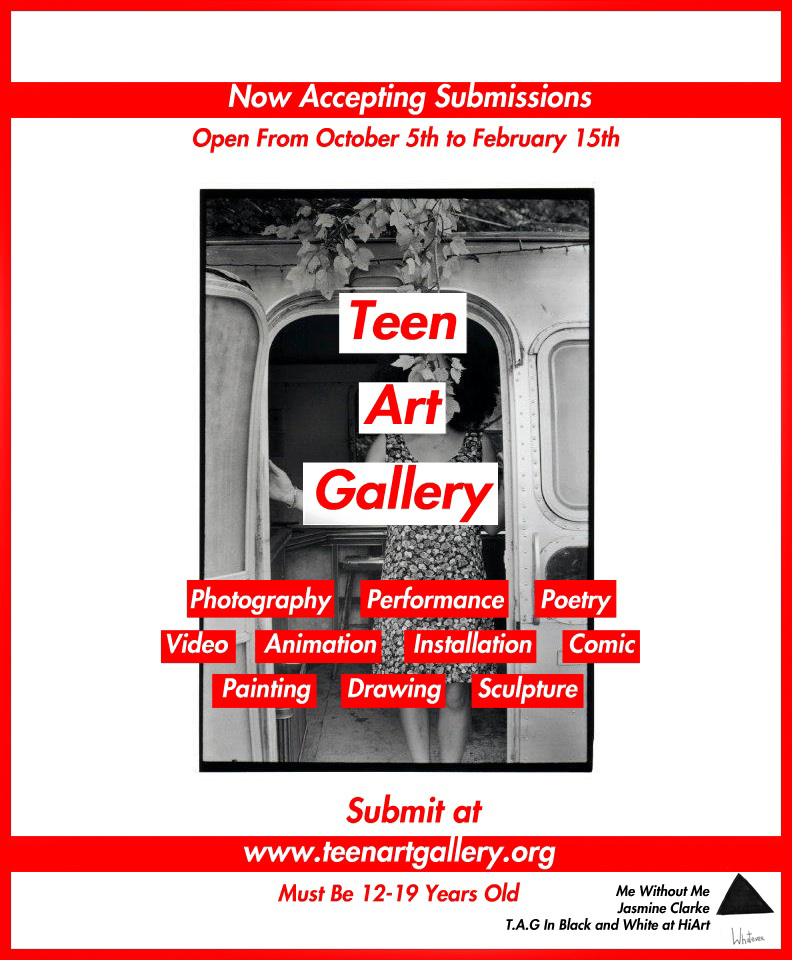CAA News Today
CWA Picks for June 2017
posted by CAA — June 09, 2017
Each month, CAA’s Committee on Women in the Arts selects the best in feminist art and scholarship. The following exhibitions and events should not be missed.
Julia Jacquette: Unrequited and Acts of Play; Playground of My Mind
Ruth and Elmer Wellin Museum of Art
Hamilton College, 198 College Hill Road, Clinton, NY
February 18–July 2, 2017
In her first major museum retrospective, artist Julia Jacquette unveils two exhibitions, Unrequited and Acts of Play and Playground of My Mind, at the Wellin Museum of Art in Clinton, New York. Curated by Tracy L. Adler, the Johnson-Pote Director of the Wellen Museum, Unrequited focuses on commercialized objects of desire, “exposing our seemingly insatiable longing for the ideal.” Known for taking her inspiration from cookbooks and contemporary food magazines, Jacquette presents “these material trappings … often close up, in crisply detailed paintings that both profess and resent such desires and the complications they present personally, socially, and culturally.”
“I feel the gender of food is an under discussed topic. The kind of food images I use are a kind of highly styled food, that I think was and is targeted at women—food that looks like it is achieving a kind of domestic perfection,” Jaquette said in an interview with Maxwell Williams.
Running simultaneously, Playground of My Mind is a graphic memoir based on the “adventure playgrounds” of New York City and Amsterdam during the 1970s. “These structures encouraged constructive, imaginative play and gave renewed life to utopian notions of American and European modernist architecture.” Jacquette’s father codesigned one for Central Park. The body of work, comprised of gouache drawings and an illustrated artist book, explores their influence on Jaquette’s aesthetic.
The exhibit also includes space for community-organized, play-oriented projects based on the project. A schedule is available online.
Michelle Vosper: Creating Across Cultures: Women in the Arts from China, Hong Kong, Macau and Taiwan
Book
ISBN9789881604705
Released February 2017 by Muse Press
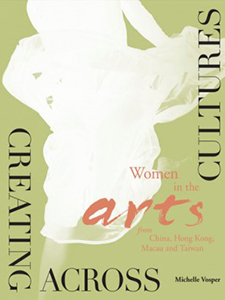
Creating Across Cultures: Women in the Arts from China, Hong Kong, Macau and Taiwan presents essays by journalists, scholars, and artists celebrate the artistic achievements of sixteen visionary women. Edited by Michelle Vosper, formerly the Asian Cultural Council Representative, the 360-page, hardback book profiles contemporary artists such as Yin Xiuzhen 尹秀珍, visual artist, and Lulu Hou 侯淑姿, photographic artist.
“These courageous women often had to defy cultural expectations in order to heed their artistic drive. Their artworks delve into the social realities of their times, and their personal stories provide an intimate portrait of the historical trajectory of Greater China over three generations.”
Other artists profiled include Nieh Hualing 聶華苓, author; Liao Wen 廖雯, art critic and curator; Candace Chong 莊梅岩, playwright; Choi Yan Chi 蔡仞姿 , artist and educator; Jaffa Lam 林嵐, installation artist; Yang Lina 楊荔鈉, filmmaker; Bun-Ching Lam 林品晶, composer; Wang Xinxin 王心心, Nanguan performer; Tian Mansha 田蔓莎, Sichuan Opera performer; Wu Na 巫娜, guqin musician; Yang Meiqi 楊美琦, modern dance pioneer; Pisui Ciyo 碧斯蔚 .梓佑, dancer/choreographer/vocalist; Mui Cheuk Yin 梅卓燕, dancer/choreographer; and Wen Hui 文慧, dancer/choreographer.
The essay authors include Liza Bielby, Christina Yuen Zi Chung, Samantha Culp, Valerie C. Doran, Jennifer Feeley, Georg Kochi, Tina Li Ying Ma, Terry O’Reilly, Ralph Samuelson, Clare Tyrrell-Morin, and Sasha Su-Ling Welland.
Octavia E. Butler: Telling My Stories
Huntington Library, Art Collections, and Botanical Gardens
1151 Oxford Road, San Marino, CA
April 8–August 7, 2017
Last year, Julia Meltzer (curator and director of the Clockshop) invited twelve artists and writers to mine the archives of Pasadena-based sci-fi writer Octavia E. Butler, who had passed away some ten years before. Because Butler gave her archive to the Huntington, much of the research for the new works and writings occasioned by Meltzer’s show happened in the Huntington’s library. Entitled Radio Imagination, that exhibition was a meditation on some of the key themes in Butler’s works (disenfranchisement, survival, the power of the mind) as well as the tricky business of re-presenting stories, documents, and a life that remains under recognized.
Now the Huntington has entered the fray with their own exhibition, this one tightly focused on the contents of Butler’s archives. It includes some of the early writings (and a really wonderful drawing of two horses) the author composed while still a child, as well as drafts of books and stories. Butler had a habit of color coding her documents, making notes with brightly colored highlighters—so these pieces of paper often have a striking visual quality. But it is the words, the prose, and the bare-bones reflections of an author working arduously to always do better that are really the stars here. In a letter sent to her mother from a pit of despair while at (what would be the first of many visits to) the Clarion Science Fiction and Fantasy Writer’s Workshop, Butler beats herself up for being blocked, and for not getting more accomplished. For a writer who was fairly private while she lived, these documents can be a revelation regarding the vulnerabilities of process, the messiness of affect, and the rigor of a brilliant mind and storyteller.
Pia Camil: Bara Bara Bara
Dallas Contemporary
161 Glass Street, Dallas, TX
April 8–August 20, 2017
“Bara! Bara! Bara!” is the cry that vendedores make in the markets in Itzapalapa, one of the sixteen boroughs of Mexico City, to lure in buyers with the promise of cheap (“barato”) goods. For her solo exhibition at the Dallas Contemporary, Mexico-based artist Pia Camil transforms some of the most ubiquitous materials from these markets, T-shirts, into expansive fields of color. These shirts are often made in Mexico (and many other countries outside the US), sold to US consumers, and then, after trickling through second-hand stores, they are eventually shipped by the tonnage back to Mexico and Central America, where they are sold to new markets. The global circuit of vestments is well-trod ground in contemporary art, one example being Shinique Smith’s Bale Variants series (2009–14). But Camil’s project is differently expansive, both formally and conceptually.
Suspended from the vast ceiling of the Dallas Contemporary’s warehouselike space, Camil’s t-shirt sheets look like low-hanging clouds, droopy body parts (bellies, breasts, asses), or, in a call-back to the site of acquisition, the informal coverings of outdoor markets. Because each of these works is called Divisor Pirata, they bear some relation to Lygia Pape’s Divisor, first performed in 1967–68. In that performance, participants from the streets of Rio de Janeiro filled in the holes of a large white piece of fabric and then travelled as a communal body through the streets. Indeed, Camil’s sheets are full-up with performance potential: viewers are invited to stick their heads through the neck holes, thus changing their perspective and relationship to these forms. What once operated like a covering now functions as a shifting new ground, rolling and roiling.
We Wanted a Revolution: Black Radical Women, 1965–85
Brooklyn Museum
200 Eastern Parkway, Brooklyn, New York 11238-6052
April 21–September 17, 2017
After almost fifty years after the groundbreaking show of contemporary black women artists, Where We At, the Brooklyn Museum has organized a landmark exhibition to honor and extend the work of these art activists. As its organizers proudly proclaim, We Wanted a Revolution: Black Radical Women, 1965–85 “is the first exhibition to highlight the voices and experiences of women of color—distinct from the primarily white, middle-class mainstream feminist movement—in order to reorient conversations around race, feminism, political action, art production, and art history in this significant historical period.” Featuring a wide array of media—film, performance, conceptual and video art, as well as painting, sculpture, photography, and print media—We Wanted a Revolution captures the energy and vitality of these critical interventions into the art practices of this formative era. Simply put, this exhibition is a must-see.
The artists represented in the exhibition include Emma Amos, Camille Billops, Kay Brown, Vivian E. Browne, Linda Goode Bryant, Beverly Buchanan, Carole Byard, Elizabeth Catlett, Barbara Chase-Riboud, Ayoka Chenzira, Christine Choy and Susan Robeson, Blondell Cummings, Julie Dash, Pat Davis, Jeff Donaldson, Maren Hassinger, Janet Henry, Virginia Jaramillo, Jae Jarrell, Wadsworth Jarrell, Lisa Jones, Loïs Mailou Jones, Barbara Jones-Hogu, Carolyn Lawrence, Samella Lewis, Dindga McCannon, Barbara McCullough, Ana Mendieta, Senga Nengudi, Lorraine O’Grady, Howardena Pindell, Faith Ringgold, Alva Rogers, Alison Saar, Betye Saar, Coreen Simpson, Lorna Simpson, Ming Smith, and Carrie Mae Weems.
The exhibition is accompanied by a sourcebook, edited by Catherine Morris and Rujeko Hockley and published by Duke University Press, which reprints important essays, correspondence, critiques, and manifestoes from key figures in this movement. Authors include Gloria Anzaldúa, James Baldwin, bell hooks, Lucy R. Lippard, Audre Lorde, Toni Morrison, Lowery Stokes Sims, Alice Walker, Michelle Wallace, and others.
Peju Alatise: Flying Girls, Nigerian Pavilion, 57th Venice Biannale
Scoletta dei Battioro e dei Tiraoro
Campo San Stae, 1980 30135, Venice, Italy
May 13–November 26, 2017
In this historic exhibition, the first-ever Nigerian Pavilion at the Venice Biannale, artist Peju Alatise takes the theme “How About NOW?” seriously. Her contribution to the Nigerian pavilion is an installation titled Flying Girls. Made over a three-year period from 2013–16, it is composed of eight black-painted and life-sized figures of girls, standing in a circle, who appear to have sprouted wings. Above them hovers a flock of birds. The work is a clear reference to the ongoing kidnapping and sexual enslavement of the Nigerian girls by Boko Haram. Flying Girls alludes to a character in one of Alatise’s books, a Yoruban girl who has been sold into domestic servitude and who dreams she belongs to no one but herself and can escape her imprisonment through flight.
Alatise, who was trained as an architect and is a renowned poet and novelist as well as a visual artist, is committed to producing works that addresses the social, political, and gender issues facing her country, with particular attention to what womanhood means within these contemporary contexts. She said this of her contribution to the Nigerian Pavilion: “I thought I would give a voice to the most vulnerable, which is the young black girl—especially in Nigeria,” she says. “It’s not necessarily focusing on that label, but the vulnerability of the girl child and the fact we do not have the government, cultural knowledge and aspiration to do something to help the girl child.”
CWA Picks for May 2017
posted by CAA — May 01, 2017
Each month, CAA’s Committee on Women in the Arts selects the best in feminist art and scholarship. The following exhibitions and events should not be missed.
Louise Lawler: A Movie Will Be Shown Without a Picture
Museum of Modern Art
11 W 53 Street, New York, NY
May 2 and 10, 2017
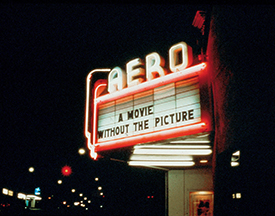
Marquee for A Movie Will Be Shown Without the Picture, Aero Theatre, Santa Monica, California, December 7, 1979 (photograph by Louise Lawler)
An appropriately deadpan announcement, now in the collection of the Metropolitan Museum of Art, for Louise Lawler’s cinematic event A Movie Will Be Shown Without A Picture (1979), reproduced the work’s title on a flat black card. Indeed, this is what viewers to the Aeron Theater in Santa Monica would have encountered on the night of Lawler’s event: a film shown without its flickering image. We might understand Lawler’s gesture as a riposte to Laura Mulvey’s influential text “Visual Pleasure and Narrative Cinema,” published five years before in the British film journal Screen. The filmic performance deprives audiences of the picture of the chosen film (the film changes with each iteration), instead asking them to rely on sound and soundtrack. Thus viewers are left to imagine and project their own fantasies (if they haven’t seen the film) or cobble together their memories of the film (if they have). As an arm of the programming for Louise Lawler’s retrospective at the Museum of Modern Art in New York, A Movie Will Be Shown Without a Picture will be screened two times.
Black Women Artists for Black Lives Matter
Project Row Houses
2521 Holman St., Houston, TX
March 25–June 4, 2017
Usually the curatorial and programming staff at Project Row Houses determine a theme and invite a series of artists to make installations and public programming inside the block of row houses in Houston’s Third Ward. This time Public Art Director Ryan Dennis and artist Simone Leigh cocurated the round to be exclusively for Black Women Artists for Black Lives Matter, a collective group that Leigh founded during her residency at the New Museum last year, and which now has chapters in London, Los Angeles, and Chicago. Performances, installations, platforms for dialogue and activation—these are the things that tie Project Row Houses and Black Women Artists for Black Lives Matter together. What began with an incubation period to get Houston’s chapter of BWA for BLM started, and was inaugurated with a processional performance, is now a full-tilt community platform for building generative ideas and actions for entering into the movement. As if to sum up the sentiments of the current round, one of the row houses is emblazoned with a supergraphic of the following sentiment: “YOU’VE GOTTA LOVE US OR LEAVE US ALONE.”
Katharina Fritsch: Multiples
Walker Art Museum
725 Vineland Place, Minneapolis, Minnesota
May 11–October 15, 2017
Katharina Fritsch’s sculpture, which seeks to defamiliarize the familiar and query the boundaries between the natural and the symbolic, will be on view at the Walker Art Museum for the next several months. Animals, religious figurines, body parts, and other objects drawn from the history and fairy tales of her native Germany take one new meanings when color, scale, and materials of everyday objects are altered. The show will include some forty objects, ranging from her early work as a student to her more recent pieces, drawn from the museum’s permanent collection. Katharina Fritsch: Multiples is a companion exhibition to the installation of her monumental, ultramarine blue Hahn/Cock in the Minneapolis Sculpture Garden in June. Described by the artist as “a feminist sculpture,” this work was first displayed on the fourth plinth in Trafalgar Square in the summer of 2013.
Musée Camille Claudel
Musée Camille Claudel
10, rue Gustave Flaubert, 10 400 Nogent-sur-Seine, France
Opened March 26, 2017
At long last, the beloved nineteenth-century French sculptor and feminist art icon Camille Claudel is receiving her due with a museum devoted to her work. Located in the small town of Nogent-sur-Seine, the Musée Camille Claudel is built around the family home where she spent her early adolescence. After a temporary exhibition of her work in 2003 brought over forty thousand visitors to Nogent-sur-Seine (pop. 6,000), it was determined that a museum dedicated to its most famous resident was in order. The Musée Camille Claudel now houses the world’s largest collection of the sculptor’s work. Visitors, who will be gratified to see such well-known pieces as The Waltz and The Gossips, will also be able to discover similarly remarkable works such as Abandon and Fortune. It takes under an hour by train to reach Nogent-sur-Seine from Paris.
Power: Work by African American Women from the Nineteenth Century to Now
Sprüth Magers
5900 Wilshire Blvd, Los Angeles, CA
March 29–June 10, 2017
The exhibition Power at Sprüth Magers features thirty-seven African American women artists from the nineteenth century until now. Works span fine-art and folk-art traditions covering multiple mediums, including painting, photography, video, sculpture, and installation. The title of the exhibition takes its name from a 1970 gospel song by Sister Gertrude Morgan, a self-taught, musician, poet, artist, and preacher. The works, engaging in issues of race, gender, and class, trace the threads of the craft-based folk traditions to a newer, academically trained generation of artists, depicting the “struggle to establish themselves as equal players on the uneven field of the American republic.”
In a review of the show published in the Los Angeles Times on April 11, 2017, the author Leah Ollman writes, “Artists here treat the physical body and the emblematic body of the nation as contested sites. Historical trauma persists within both, and both serve as ready—if not always willing—vehicles for self-determination.”
Artists in the exhibition, which was curated by Todd Levin, include: Beverly Buchanan, Elizabeth Catlett, Sonya Clark, Renee Cox, Njideka Akunyili Crosby, Karon Davis, Minnie Evans, Nona Faustine, LaToya Ruby Frazier, Ellen Gallagher, Leslie Hewitt, Clementine Hunter, Steffani Jemison, Jennie C. Jones, Simone Leigh, Julie Mehretu, Sister Gertrude Morgan, Senga Nengudi, Lorraine O’Grady, Sondra Perry, Howardena Pindell, Faith Ringgold, Betye Saar, Joyce J. Scott, Emmer Sewell, Ntozake Shange, Xaviera Simmons, Lorna Simpson, Shinique Smith, Renee Stout, Mickalene Thomas, Alma Woodsey Thomas, Rosie Lee Tompkins, Kara Walker, Meta Vaux Warrick Fuller, Carrie Mae Weems, and Brenna Youngblood.
Power will also include an installation of over one hundred African American vernacular photographs from the early twentieth century on loan from the Ralph DeLuca Collection. They offer a diverse view into everyday lives of African American women, from images of positive change to difficult scenes of negative stereotyping and violence. Offered as an exhibition-within-an-exhibition, these images from a century ago encourage reflection upon the continued struggles of black lives in America today.
We Wanted a Revolution: Black Radical Women, 1965–85
Brooklyn Museum
Elizabeth A. Sackler Center for Feminist Art and Stephanie and Tim Ingrassia Gallery of Contemporary Art, Fourth Floor, 200 Eastern Parkway, Brooklyn, New York
April 21–September 17, 2017
The exhibition We Wanted a Revolution: Black Radical Women, 1965–85 explores the intersections of avant-garde art worlds, radical political movements, and profound social change through photography, sculpture, printmaking, photography, performance, film, and video. Examining the political, social, cultural, and aesthetic priorities of women of color during the emergence of second-wave feminism, this exhibition is the first “to highlight the voices and experiences of women of color—distinct from the primarily white, middle-class mainstream feminist movement—in order to reorient conversations around race, feminism, political action, art production, and art history in this significant historical period.”
The artists represented in the exhibition include: Emma Amos, Camille Billops, Kay Brown, Vivian E. Browne, Linda Goode Bryant, Beverly Buchanan, Carole Byard, Elizabeth Catlett, Barbara Chase-Riboud, Ayoka Chenzira, Christine Choy and Susan Robeson, Blondell Cummings, Julie Dash, Pat Davis, Jeff Donaldson, Maren Hassinger, Janet Henry, Virginia Jaramillo, Jae Jarrell, Wadsworth Jarrell, Lisa Jones, Loïs Mailou Jones, Barbara Jones-Hogu, Carolyn Lawrence, Samella Lewis, Dindga McCannon, Barbara McCullough, Ana Mendieta, Senga Nengudi, Lorraine O’Grady, Howardena Pindell, Faith Ringgold, Alva Rogers, Alison Saar, Betye Saar, Coreen Simpson, Lorna Simpson, Ming Smith, and Carrie Mae Weems.
A host of events accompanied the exhibition. In addition to the DJ reception on April 20, which paid tribute to the revolutionary music of black women, the week-long opening celebration also included a symposium on April 21, a Julie Dash film marathon on April 22, and a Black Lunch Table on April 23.
We Wanted a Revolution, organized by Catherine Morris, Sackler Family Senior Curator for the Elizabeth A. Sackler Center for Feminist Art, and Rujeko Hockley, former assistant curator of contemporary art at the Brooklyn Museum, is part of A Year of Yes: Reimagining Feminism at the Brooklyn Museum, a yearlong series of exhibitions celebrating the tenth anniversary of the Elizabeth A. Sackler Center for Feminist Art.
CWA Picks for April 2017
posted by CAA — March 30, 2017
Each month, CAA’s Committee on Women in the Arts selects the best in feminist art and scholarship. The following exhibitions and events should not be missed. Check the archive of CWA Picks at the bottom of the page, as several museum and gallery shows listed in previous months may still be on view or touring.
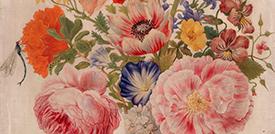
Maria Sibylla Merian, Chinese Vase with Roses, Poppies and Carnations, ca. 1670–1680 (photograph © Staatliche Museen zu Berlin, Kupferstichkabinett / Dietmar Katz)
Maria Sibylla Merian and the Tradition of Flower Illustration
Kupferstichkabinett, Berlin
Matthäikirchplatz, 10785 Berlin, Germany
April 7–July 3, 2017
Städel Museum in Frankfurt
Schaumainkai 63, 60596 Frankfurt am Main, Germany
October 11, 2017–January 14, 2018
Academic conference
University of Amsterdam
ARTIS Library, Plantage Middenlaan 45-45A, 1018 DC Amsterdam, Netherlands
June 7–9, 2017
In commemoration of the three hundredth anniversary of the death of the German-born illustrator and naturalist Maria Sibylla Merian, the Kupferstichkabinett in Berlin (April 7–July 2, 2017) and Städel Museum in Frankfurt (October 11–January 14, 2018) are sponsoring a joint show of approximately 150 of her works on paper and vellum. Known for her exquisite depictions of flowers and insects, Merian had an international reputation in her lifetime. Her illustrated texts include a volume of engravings of flora and fauna she produced while on a scientific expedition to the Dutch colony of Surinam in 1699. As a complement to this exhibition, the University of Amsterdam is sponsoring an academic conference titled “Changing the Nature of Art and Science: Intersections with Maria Sibylla Merian” (June 7–9, 2017), where her contributions to the history of printmaking, natural history, and botanical art will be honored.
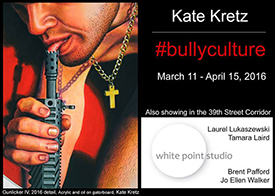
Invitation for Kate Kretz’s #bullyculture
Kate Kretz: #bullyculture
39th Street Gallery and Corridor Exhibition Space
Gateway Arts Center, 3901 Rhode Island Ave, Brentwood, Maryland
March 11–April 15, 2017
#bullyculture represents the first phase of an ambitious in-progress series that Kate Kretz commenced in 2011 and will conclude later this year. In her quest to find the common denominator to all the crimes against women, children, “minorities,” animals, and the earth, she has produced a large corpus of works on paper, sculpture, paintings, textiles, and mixed media. Some of the themes she explores in this series include “trophy hunting, VIP culture and ‘the 1%’, corporate destruction of the earth, rape culture and sexual entitlement, the fetishization of guns and their use for intimidation.” The artist, who has received numerous awards and grants, including the Southeastern College Art Conference’s 2016 award for Outstanding Artistic Achievement and a position on the Fulbright Specialist Roster through 2021, will be giving a lecture on April 1.
Shagha Ariannia: Who Sings the Nation-State?
Vincent Price Art Museum
East Los Angeles College, 1301 Avenida Cesar Chavez, Monterey Park, CA
March 18–June 10, 2017
A little over fifteen years ago, and one week after 9/11, Shagha Ariannia and her family arrived to Los Angeles as migrants from Iran. Ariannia has mined this particularly potent history of travel, place-finding, and identity-in-transit throughout her artistic career by, for example, annotating her family’s photographic archives in a series called What would America/Iran do without Iran/America? (2012). This solo exhibition focuses on a series of works Ariannia has been creating using national anthems from various countries (Iran and the United States included, among many others). In this way she takes seriously the titular question posed by Gayatri Spivak and Judith Butler in their 2007 dialogue Who Sings the Nation-State? As Butler says in that text, in regard to hearing the US national anthem sung in Spanish in the streets of Los Angeles, “The monolingual requirement of the nation surely surfaces in the refusal to hear the anthem sung in Spanish, but it does not make the anthem any less sing-able in that or any other language” (60).
Nina Katchadourian: Curiouser
Blanton Museum of Art
200 E. Martin Luther King Jr. Blvd., Austin, TX
March 12 – June 11, 2017
A few years ago I recall seeing a dozen or so clickbait-y articles written about Nina Katchadourian’s Lavatory Self-Portraits in the Flemish Style, a series in which the artist constructed toilet-paper and neck-pillow costumes during long-haul flights and photographed herself wearing them in the tiny, and poorly lit, spaces of onboard lavatories. This midcareer survey—the artist’s first touring museum exhibition—promises to flesh out Katchadourian’s wide-ranging work. The Flemish lavatory portraits, for example, are only one piece of a larger series of works using the airplane as studio space (Seat Assignment, 2010–ongoing). One of the works on display, and one of her most well-known, is the video Accent Elimination, wherein the artist hired a speech coach to teach her parents (both foreign born) to speak in a “standard” American accent, and, in turn, to teach her how to speak with her parents’ accent. Her collaborations with her family, other artists, international agencies, and even animals are potent reminders that the activity of art is almost never a solitary endeavor, and her interest in quotidian acts of creativity suggests that art can be found anywhere. One just has to know how to look.
May Stevens: Alice in the Garden
Ryan Lee Gallery
515 West 26th Street, New York, New York
February 23–April 8, 2017
May Stevens, a celebrated activist committed to the civil rights, antiwar, and feminist movements, used painting to combat social injustice and to revise women’s history throughout her seventy-year career. The exhibition Alice in the Garden comprises several large-scale paintings depicting Alice Dick Stevens, her elderly mother, during the final years of her life.
From 1983 and 1990, Stevens turned her attention to her mother and producing the five-panel painting Alice in the Garden (1988–89). “The mural-like images confront the viewer with the massive figure of Alice—fleshy, fragile, and vulnerable. In her hands, Alice manipulates flowers—dandelions Stevens had playfully thrown at her during an afternoon visit.”
In a conversation with the art historian Patricia Hills, Stevens explained the importance of Alice as a subject: “For me I think it means I want her [Alice] to be known, even for the individual person that she is, but it also means that I want people like that not to be forgotten. For me she’s not just a single person, because we all know this person. We all know her and we may become her. She’s a problem. As aging is a problem, as illness is a problem, as being a woman who does not fulfill herself is a problem.” (Patricia Hills, May Stevens [San Francisco: Pomegranate, 2005], 45.)
Today May Stevens, now 92, lives with Alzheimer’s disease in a memory-loss facility in New Mexico. She has received numerous awards including ten MacDowell Colony residencies, the Women’s Caucus for Art Lifetime Achievement Award (1990), a Guggenheim fellowship in painting (1986), a National Endowment for the Arts Fellowship in painting (1983), an Andy Warhol Foundation residency (2001), and CAA’s own Distinguished Artist Award for Lifetime Achievement (2001).
Terrains of the Body: Photography from the National Museum of Women in the Arts
Whitechapel Gallery
77-82 Whitechapel High St, London
January 18–April 16, 2017
Featuring over seventeen contemporary artists working across mediums, Terrains of the Body: Photography from the National Museum of Women in the Arts assembles an impressive collection from Washington, DC, for display across the water in London. “By turning their camera to women, including themselves, these artists embrace the female body as a vital medium for storytelling, expressing identity and reflecting individual and collective experience.”
Many works in the display extend the scope of 1970s feminist art, including performance and video. This display celebrates their legacy today. Moving between photography’s ability to document and tell stories, these works present women as creator and subject of their work. Several artists in the exhibition, including Nan Goldin and Daniela Rossell, photograph women in expansive series that appear documentary in nature. Other artists include Marina Abramović, Rineke Dijkstra, Anna Gaskell, Charlotte Gyllenhammar, Candida Höfer, Icelandic Love Corporation, Mwangi Hutter, Kirsten Justesen, Justine Kurland, Nikki S. Lee, Hellen van Meene, Shirin Neshat, Eve Sussman and the Rufus Corporation, Janaina Tschäpe, and Adriana Varejão.
Participate in ARTexchange at the 2017 Annual Conference
posted by CAA — September 08, 2016
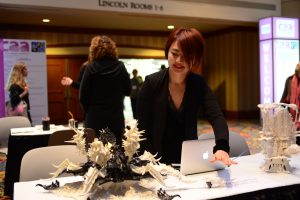 The artist Young Suk Lee participates in ARTexchange at the 2016 Annual Conference in Washington, DC (photograph by Bradley Marks)
The artist Young Suk Lee participates in ARTexchange at the 2016 Annual Conference in Washington, DC (photograph by Bradley Marks)The Services to Artists Committee invites artist members to participate in ARTexchange, CAA’s unique pop-up exhibition and annual meet-up for artists and curators. This social event provides an opportunity for artists to share their work and build affinities with other artists, historians, curators, and cultural producers. ARTexchange will take place at the 105th Annual Conference in New York on Friday evening, February 17, 2017, from 5:30 to 7:30 PM.
Each artist is given the space on, above, and beneath a six-foot table to exhibit their work: prints, paintings, drawings, photographs, sculptures, and small installations; performance, process-based, interactive, and participatory works are especially encouraged. Previous ARTexchange participants have found that this parameter sparked many creative display options. Please note that artwork cannot be hung on walls, and it is not possible to run power cords from laptops or other electronic devices to outlets.
To participate as an exhibiting artist in 2017, contact Katie Apsey, CAA manager of programs, by December 2, 2016, with the following information: (1) a short description of what you will exhibit and how you will use the six-foot table space (provide details regarding performance, sound, spoken word, or technology-based work, including laptop presentations); (2) your CAA member number (memberships must be active through February 18, 2017); and (3) your website or a link to a digital portfolio.
Because ARTexchange is a popular venue and participation is based on available space, early applicants are given preference. Participants are responsible for their work; CAA is not liable for losses or damages. Sales of work are not permitted. Deadline extended: January 6, 2017.
This Week in caa.reviews
posted by CAA — June 10, 2016
James M. Córdova on sixteenth-century murals in Mexico: Penny Morrill, The Casa del Deán: New World Imagery in a Sixteenth-Century Mexican Mural Cycle.
Lynne Ellsworth Larsen on the relationship between art and language in Yoruba art: Rowland Abiodun, Yoruba Art and Language: Seeking the African in African Art.
Terri Weissman reviews the inaugural exhibition at the new Whitney Museum of American Art, America Is Hard to See.
James Merle Thomas on collaborations between artists and corporations at the Los Angeles County Museum of Art: From the Archives: Art and Technology at LACMA, 1967–1971.
A Visit with CAA 2016 Keynote Speaker Tania Bruguera at the Havana Biennial
posted by Christopher Howard — November 04, 2015
Kate Flint, Provost Professor of Art History and English at the University of Southern California in Los Angeles, wrote an article for Public Books on her experiences at the Havana Biennial, which was held May 22–June 22, 2015. In her text, titled “Breaking Down Walls at the Havana Biennial” and published on November 1, Flint describes her encounters with works of art throughout the city. Here is one experience:
Many works of art on show in the “Zona Franca” were overtly political: Michel Mirabal’s distressed and fragmenting Cuban and American flags; Luis Camejo’s delicate drawings of Cuban monuments collapsed, flooded, overgrown at the end of the third millennium; Arlés del Rio’s La necesidad de otros aires (The Need for Other Airs), an entire room filled with breathing tubes hanging from the ceiling, like elongated snorkels, reminding us that being choked by police, or by political or social constraints, or, for that matter, by pollution (and deep concern for the environment was a frequently occurring theme at the Biennale) is a global, as well as a local, concern.
Flint, who traveled to Cuba as part of a trip organized by CAA, participated in a performance work by Tania Bruguera, the artist who will deliver the keynote address during Convocation at the 2016 Annual Conference in Washington, DC. Flint wrote:
During the Biennial’s first weekend, Bruguera staged a hundred-hour reading of Hannah Arendt’s Origins of Totalitarianism. Seated inside her own home, she was breaking no laws (she asked for, but was told she didn’t need, a police permit). The reading—usually in Spanish—was broadcast through loudspeakers, muted at night, to the street outside…. The readings were carried out by those who signed up on a sheet inside space, bare but for a chair, video camera, treats brought by supporters, and a tethered dove…. I was about the 124th person to sign up to read. About an hour later, I was invited to sit in the chair. I’d only intended to read a short paragraph, but no one around seemed to want to take over. Indeed, people seemed to be clearing up their things. Seven pages of Arendt (in Spanish) later, Bruguera herself came over and took the book from me, finished that particular paragraph, and we all exited.
You can also read another article on the same trip to Cuba, written by Katherine Jánszky Michaelsen, professor of art history at the Fashion Institute of Technology in New York, on the CAA website.
The next CAA-sponsored trip is the Turkish-Islamic Art Study Tour, taking place June 3–18, 2016. For more information, please visit CAA’s international tours page.
Art2Drone Catalogue Exhibition
posted by Christopher Howard — January 23, 2015
 Art2Drone is a catalogue exhibition, published in conjunction with ARTspace at the 2015 Annual Conference in New York, that brings together the work of artists who investigate drone technology and its cultural implications. The artworks will highlight political, social, scientific, and artistic impacts of drone technology. The catalogue is distributed by CAA and v1b3 as a printable PDF. Each project will link to a website to view additional media. Included in the catalogue is a critical essay by Meredith Hoy.
Art2Drone is a catalogue exhibition, published in conjunction with ARTspace at the 2015 Annual Conference in New York, that brings together the work of artists who investigate drone technology and its cultural implications. The artworks will highlight political, social, scientific, and artistic impacts of drone technology. The catalogue is distributed by CAA and v1b3 as a printable PDF. Each project will link to a website to view additional media. Included in the catalogue is a critical essay by Meredith Hoy.
The curators of Art2Drone are Chris Manzione, Conrad Gleber, Gail Rubini, and Mat Rappaport. The online and downloadable catalogue can be found at http://v1b3.com/project/art2drone/.
Queer Threads: Crafting Identity and Community
posted by Nia Page — January 14, 2014
 This week the Leslie-Lohman Museum of Gay and Lesbian Art in New York will open Queer Threads: Crafting Identity and Community, an exhibition of twenty-four artists from around the world who mix fine art and fiber craft traditions—from crochet, embroidery, knitting, and lace to macramé, needlepoint, quilting, and sewing—to remix contemporary gay and lesbian culture. Organized by John Chaich, Queer Threads will be on view January 17–March 16, 2014.
This week the Leslie-Lohman Museum of Gay and Lesbian Art in New York will open Queer Threads: Crafting Identity and Community, an exhibition of twenty-four artists from around the world who mix fine art and fiber craft traditions—from crochet, embroidery, knitting, and lace to macramé, needlepoint, quilting, and sewing—to remix contemporary gay and lesbian culture. Organized by John Chaich, Queer Threads will be on view January 17–March 16, 2014.
From an enormous pride flag flowing across two walls and morphing into a floor sculpture to an animation recreating RuPaul’s “Supermodel” video completely in cross-stitch, and from a life-sized crocheted men’s locker room to delicate embroidery on leather and antique fabrics, Queer Threads will fully activate the gallery space with both large-scale and intimate work.
Queer Threads presents both established and emerging artists from four continents including: Chris Bogia (New York), Melanie Braverman (Massachusetts), Jai Andrew Carrillo (California), Chiachio & Giannone (Argentina), Liz Collins (New York), Ben Cuevas (California), Pierre Fouché (South Africa), James Gobel (California), Jesse Harrod (Virginia), Larry Krone (New York), Rebecca Levi (New York), Aubrey Longley-Cook (Georgia), Aaron McIntosh (Maryland), Allyson Mitchell (Canada), John Thomas Paradiso (Maryland), Sheila Pepe (New York), Maria E. Piñeres (California), Allen Porter (deceased), L. J. Roberts (New York), Sonny Schneider (Denmark), Buzz Slutzky (New York), Nathan Vincent (New York), and Jessica Whitbread (Canada).
CWA Picks for December 2013
posted by Christopher Howard — December 05, 2013
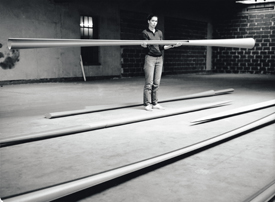 Each month CAA’s Committee on Women in the Arts produces a curated list, called CWA Picks, of recommended exhibitions and events related to feminist art and scholarship in North America and around the world.
Each month CAA’s Committee on Women in the Arts produces a curated list, called CWA Picks, of recommended exhibitions and events related to feminist art and scholarship in North America and around the world.
The CWA Picks for December 2013 consist of four important survey exhibitions of work by Isa Genzken at the Museum of Modern Art and Harmony Hammond at Alexander Gray Associates in New York, by Martha Wilson at Rutgers University in New Brunswick, New Jersey, and by Kimsooja in Vancouver, British Columbia.
Check the archive of CWA Picks at the bottom of the page, as several museum and gallery shows listed in previous months may still be on view or touring.
Image Caption
Isa Genzken in her studio, 1982 (photograph provided by the artist and Galerie Buchholz, Cologne/Berlin).



